This is Part 2 of a two-part Article.
In Part I, I dealt with Henry Grabowski’s justification for exclusivities in respect of biologics. In this part, I shall deal with Kimball, Ragavan and Vegas’s article ‘Reconsidering the Rationale for the Duration of Data Exclusivity’. This article makes a strong case for the renunciation of a 12-year long market exclusivity period for drugs, due to the involvement of innovative technology in drug development.
Is Grabowski’s Justification of Data Exclusivity Still Valid? : AI and Associated Tech
Kimball et al set about indicating that biosimilars face greater barriers to entry due to the combined periods of data exclusivity and market exclusivity acting simultaneously. This prevents biosimilars from being introduced in the market until the expiry of 12 years since the approval of the new biologic entities (NBEs). They link exclusivity in the case of biologics to Grabowski’s conclusion where he claims that “break-even lifetime for portfolio occurs at 12.9 years,” and note that a recent study claims that biologics take up shorter pre-clinical development times, as compared to chemical entities.
They state that two changes make Grabowski’s arguments on exclusivity inapplicable to the present times. First, additional periods of exclusivity have been introduced for certain designations, namely paediatric exclusivity (6 months) and orphan drug exclusivity (7 years). This entitles even successfully commercialized drugs to an additional period of exclusivity beyond 12 years, if the designation is sought at a later stage. Second, the introduction of technological advancements have positively impacted time durations, costs and success rates for drugs.
I shall limit myself to presenting the salient points of the authors’ highly detailed discussion on the impact of technological advances on drug development:
- Artificial Intelligence: They cite the uses of Artificial Intelligence in effectively analysing data and aiding efficient and cost-effective drug discovery and development. In addition to the advantages linked with heightened efficiency in the process of drug development, they claim through reliance on IQVIA’s study on the changing landscape of R&D (‘IQVIA R&D Study’) that AI works with high accuracy. They further note in accordance with BenchSci’s findings that at least 33 pharmaceutical companies (updated to 43) use AI-associated tech for drug discovery and development.
- Biomarker Identification: The authors explain that a biomarker enables one to measure the response to therapeutic intervention, thereby facilitating better diagnosis and monitoring. The authors rely on IQVIA’s R&D Study to conclude that reliance on biomarkers in the process of drug development is envisaged to improve recruitment and functioning of clinical trials, while also tackling sub-variants of diseases.
- Patient-centered mobile technology: The authors claim that such technology shall result in live monitoring of clinical subjects at external sites, while ensuring generation of vast data related to every aspect of the patient. Placing reliance on IQVIA’s R&D Study once again, the authors state that mobile technology will reduce burdens of workers at the clinical site, and facilitate smoother and more efficient trials.
The authors conclude that the 12-year period of market exclusivity for biologics is no longer justified due to the increased efficiency and the reduced costs accountable to the employment of technological advancements.
The interface of technology in drug development has been in vogue since Grabowski justified the requirement for data exclusivity in 2009, and introduction of disruptive technologies has given this fight renewed strength. There have been numerous pieces which argue (here [pp. 10-15], here, here and here) that drug discovery and development is already benefitting or may further benefit from employment of technology. As numerous pharmaceutical companies embrace technological innovations (here and here), technology-induced benefits of cost-reductions, accuracy and efficiency also accrue to them. In that case, why should the benefit accrued by Big Pharma not be passed on to patients? Why should generics/biosimilars not enter the market quickly, if resources invested have been cut down? Even though these are pertinent questions, reducing periods of exclusivity may lead us into a totally different quagmire, packed with power politics and lobbyists!
Having noted my support for Kimball et al’s arguments, it cannot be ignored that only the major pharma players seem to be employing disruptive technologies currently. A recent analysis also recorded that the notion of Big Pharma primarily engaging in innovative drug development is not true. Thus, if exclusivities were to be pulled back, would the smaller pharma companies suffer? Indeed, these companies could face a double whammy from the withdrawal of data exclusivity terms, if first they cannot take advantage of technology and second, they do not have the deep coffers to fund their own research and drug development. In my opinion, though the conclusion of Kimball et al applies perfectly to the Big Pharma, it might be early for it to apply across the industry.
Another viable alternative which could be implemented at the present would be to allow adjustable exclusivity periods for chemical entities and biologics. In case companies rely on disruptive technologies as described by Kimball et al, a disclosure to that effect should ensure that they are not granted the standard exclusivity periods. Contrarily, companies which work without inputs of disruptive technologies should be entitled to the ordinary exclusivity terms. Though the practicality of the idea needs to be tested in the market’s crucible, it offers a fair means to grant drug exclusivities.
Data Exclusivity: COVID-19 and Developing Countries
The transformation of the novel coronavirus from an epidemic to a full-scale global pandemic has revealed a general reluctance of certain countries to work together. At the recently concluded, World Health Assembly’s conference, US and UK exhibited their dissent to the launch of a global patent pool. The subsequent disapproval of a voluntary patent pool by Big Pharma is not at all surprising! Amidst these series of negatives, there are countries, organizations and individuals striving relentlessly to attain a somewhat ‘perfect’ world, i.e. one where patent pools function smoothly and treatments/vaccines for COVID-19 are patent-free. But again the world’s closer to Erewhon than it is to Utopia (it’s perfect with its imperfections but not absolutely perfect)! Simultaneously, the evidence of determinative concerted action is also clearly visible through Gilead Sciences’ grant of voluntary non-exclusive licensing for its drug remdesivir, proved to be effective against the virus.
‘Access’ to treatments and vaccines to tackle COVID-19 seems fraught with dangers, with uncertainty as to whether the eventual treatment will be available and affordable. Contrarily, patent applications for potential COVID-19 treatments regularly make rounds in the news (here, here, here, here and here). With the pharma companies attempting to protect their investments, and rightly so, public health shall be offered a backseat. With the applications for marketing approvals, come the ill-famed durations of exclusivity discussed above. The deadly combination of drug exclusivities have the potential of blocking off generics/biosimilars for long enough to adversely impact public health. The worse effects of the exclusivities shall be faced in the middle and low income companies, where a sum considered reasonable elsewhere may be overburdening on the government health system and the general population. We may very well have a vaccine which works against the virus but the exclusivities may play an important role in determining access. For now it is merely a wait and watch game!



